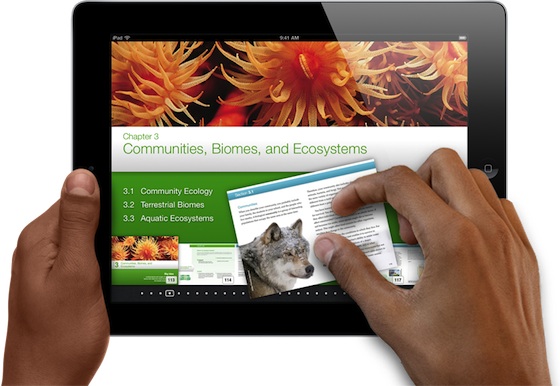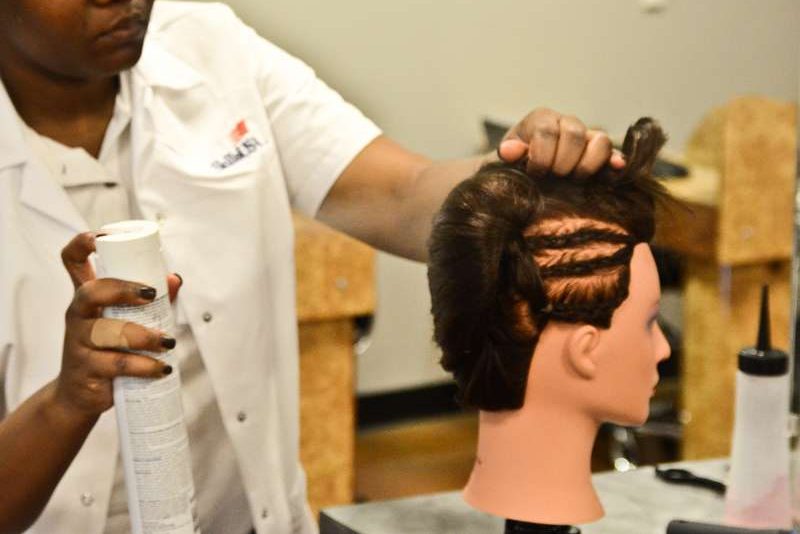Apple recently began publishing textbooks via its iBook application. According to the Global Equities Research, within three days of the app launch, consumers had downloaded over 350,000 textbooks. Apple has currently only released textbooks for grades K-12, with college textbooks planned for the future.
According to campus instructional technology specialist Rachel Boyd, the innovation opens up exciting doors for technology into the classroom.
“I think it’s awesome,” Boyd said.“As long as the lessons are still designed well and are not about the technology but about the learning, the technology will make the lessons a more engaging and richer experience for the student.”
For junior Joey Courville, the thought of incorporating Apple technology into classes is not only interesting, but logical.
“The district should implement iPads into schools so they won’t have to print all those books out and waste all the money on actual books and just have electronic books so the students won’t have to carry them around,” Courville said. “I really don’t have a preference of real book or iBook. I like the feeling of having an actual book to read but I like the convenience of having them all on my iPhone.”
The release of textbooks has also brought along Apple’s new iBooks Author. Just as iOS users could create their own applications, they can now write their own textbooks. The free app provides authors with templates to easily create their own textbooks. For Boyd, this is an especially appealing development.
“Most teachers cannot agree on textbooks, and even one teacher will not say ‘I love this textbook from beginning to end’,” Boyd said. “What teachers really need is to be able to pull from the best sources and also have rich media like video and simulations.”
Despite the logical reasoning behind purchasing iPads for students, Courville admits the potential downsides they could bring, but proposes simple solutions already taken on campus computers.
“iPhones and iPads would be really distracting in school, but if there was a way to block all the games that people have on their phones I think it wouldn’t be a distraction at all, it’d be very beneficial,” Courville said.
According to sophomore CJ Maxwell, aside from the convenience of iBooks, introducing them into the classroom would change the way students learn.
“It would be a lot better because there would be a lot of videos and activities, and it’d be more effective than just reading the textbook,” he said. “The iPad would let students be more interactive with learning.”
For freshman Jenny Barra, switching to iPads would provide students with not only new learning techniques, but convenience as well.
“Textbooks are heavier and [iPads would take away] having to keep up with all of my books,” Barra said. “And books get damaged over time. I think that if everyone had their own iPad it’d be a lot easier.”
For the price of $14.99 per book, the iPad presents itself as the reasonable choice. With the average price of a high school textbook ranging from $75 to $100, Maxwell said he sees switching to iPads as an economically effective move.
“I know to some people it’d be easier to just buy the textbook, but I think once you buy the iPad it’d be easier to just put them on the iPad,” Maxwell said. “It would be a lot.”






